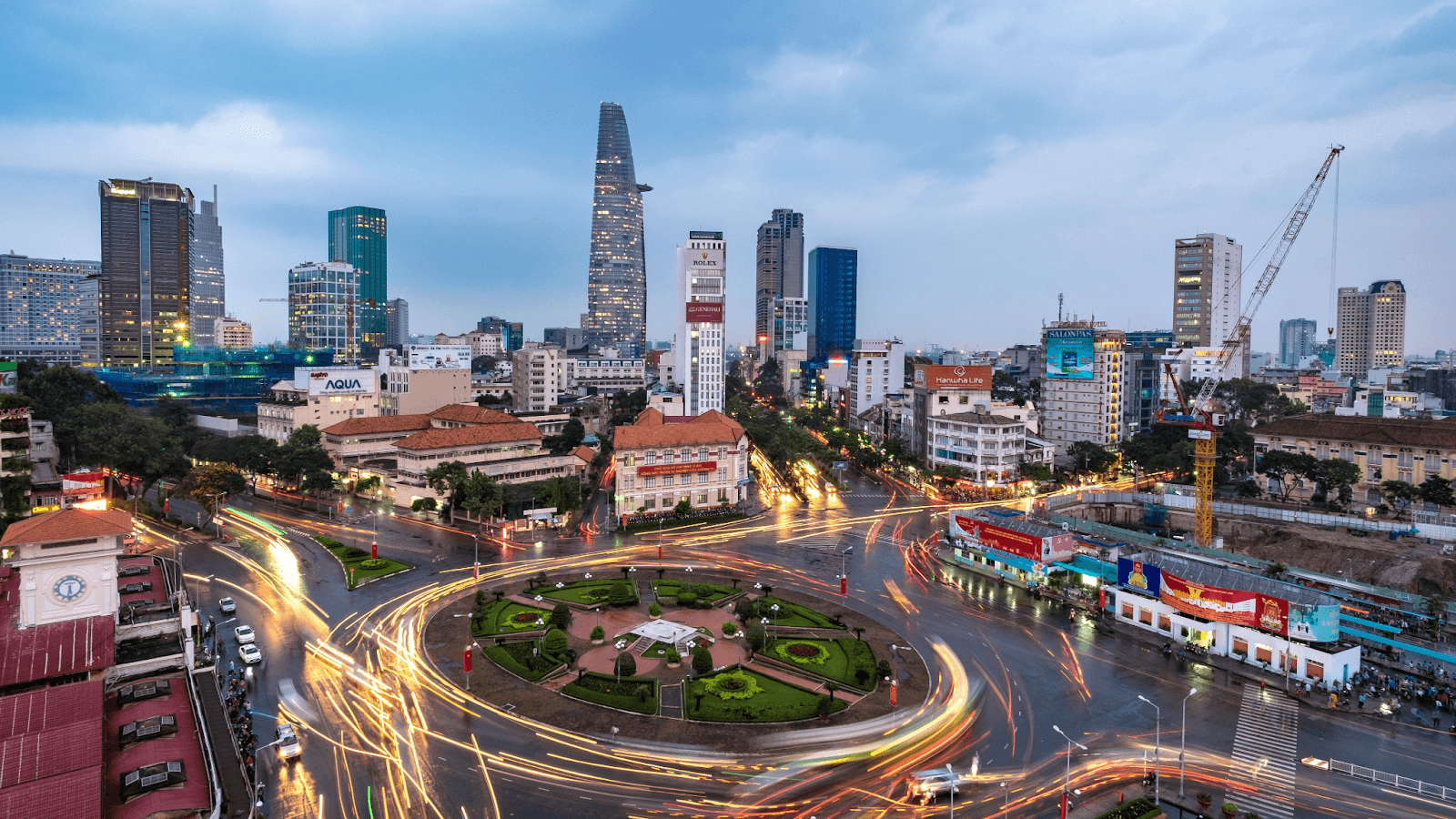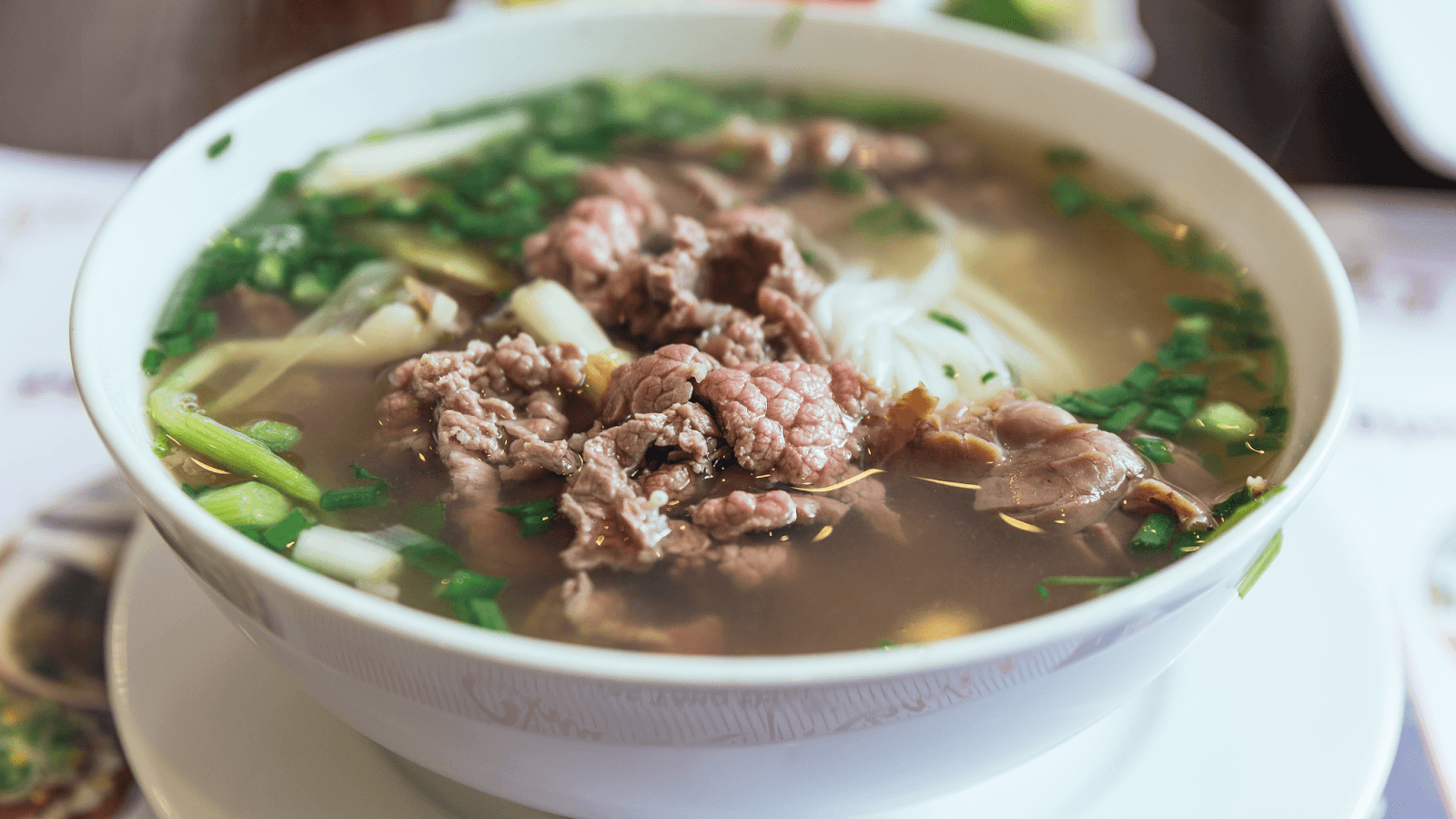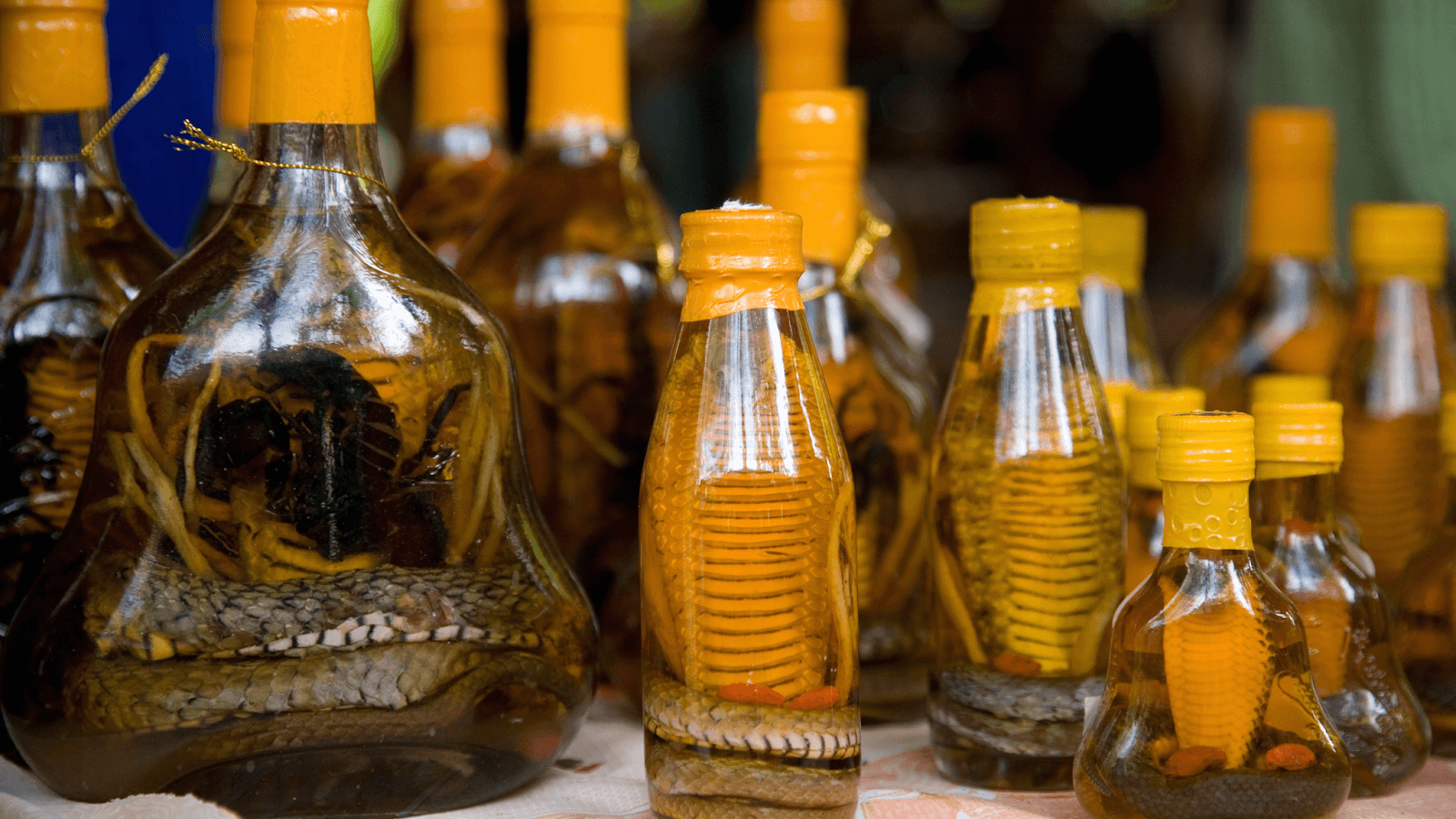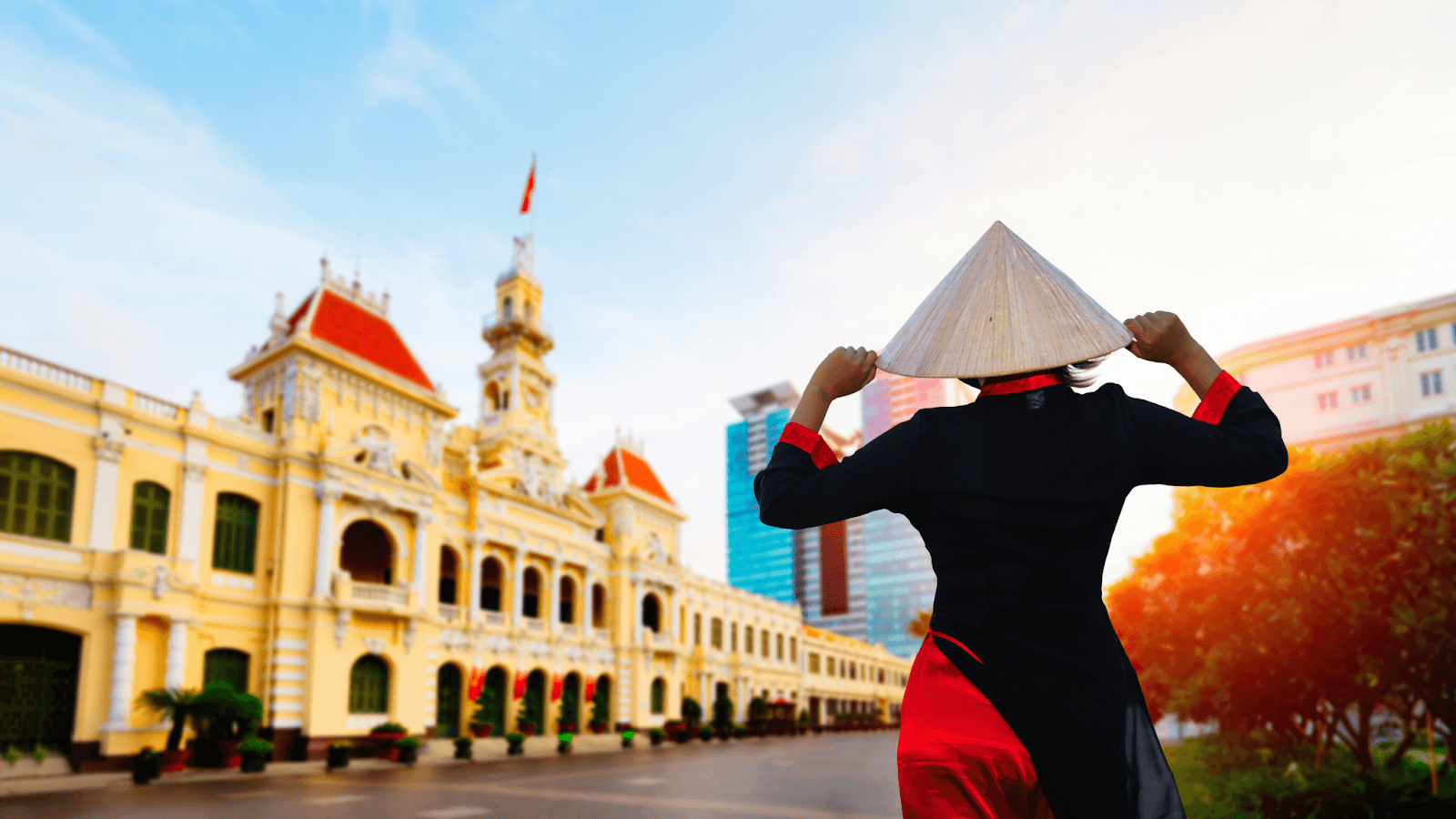Vietnam Travel Guide 2025
Vietnam is a Southeast Asian country with a fascinating history and culture. In just the first eight months of 2025, it welcomed over 14 million international tourists, nearly a 27% increase compared to the previous year. These figures reflect that this beautiful destination offers travelers countless opportunities to immerse themselves in a unique cultural experience.
Vietnam’s history speaks for itself, a country that has overcome difficult times, including the long wars of the 20th century. Today, those chapters belong to the past, and Vietnam opens its doors to visitors eager to discover breathtaking natural landscapes and dynamic cities, where tradition and modernity coexist. A clear example is its capital, Hanoi, which combines a vibrant food scene with French colonial architecture, ancient temples, and modern buildings.

Vietnam also stands out for its rich historical heritage. A prime example is the Imperial Citadel of Thang Long, a UNESCO World Heritage Site showcasing the country’s cultural depth. Other cities, such as Hoi An, preserve traditional charm that captivates every visitor.
Things to Do in Vietnam
Vietnam offers a wide range of experiences, from stunning natural landscapes to vibrant, history-filled cities.
Hanoi
The capital city is a fascinating mix of tradition and modernity. Must-see attractions include:
- Old Quarter: a maze of narrow streets dedicated to traditional trades, full of markets, cafés, and temples.
- Ho Chi Minh Mausoleum: honoring the country’s most influential leader.
- Hoan Kiem Lake: with Ngoc Son Temple, an oasis in the city where locals practice tai chi at sunrise.

- Water Puppet Theater: a unique cultural performance combining puppetry, music, and dance.
- French landmarks: like the Hanoi Opera House and Long Bien Bridge, built by Gustave Eiffel.

Ha Long Bay
A UNESCO World Heritage Site famous for its thousands of limestone islands and emerald waters. Perfect for cruises, kayaking, or overnight stays on traditional junks.

Hoi An
A charming port town with preserved architecture, merchant houses, and colorful lanterns. Declared a UNESCO World Heritage Site, it’s also perfect for cooking classes, tailor-made clothing, and cycling through rice fields.
Hue
The former imperial capital, known for its Citadel and the tombs of the Nguyen emperors, surrounded by lakes and gardens. Its cuisine is among the finest in Vietnam.
Ho Chi Minh City (Saigon)
The country’s economic hub, mixing skyscrapers like Bitexco Tower with colonial monuments such as Notre Dame Cathedral and the Central Post Office. Don’t miss the lively Ben Thanh Market.

Mekong Delta
A vast network of canals, floating villages, and river markets that showcase the rural charm of southern Vietnam. Explore tropical orchards, local farms, and traditional communities.
Sapa and the Northern Mountains
Ideal for nature lovers and trekking enthusiasts. Surrounded by rice terraces and misty peaks, this region is home to ethnic minority groups like the Hmong and Dao, offering authentic homestays.
Traveler Tip: Always bargain in local markets — in places like Ben Thanh Market or Hanoi’s night market, haggling is part of the fun!
Vietnamese Cuisine
Vietnamese cuisine is world-famous for its freshness, balance, and vibrant flavors. It reflects a blend of Asian traditions with French influence and is one of the country’s biggest attractions.
Dishes to try:
- Phở: the iconic noodle soup, with beef or chicken and aromatic broth.

- Bánh mì: the famous Vietnamese sandwich made with a French baguette and local ingredients.
- Gỏi cuốn (fresh spring rolls): rice paper rolls with shrimp, noodles, and herbs.
- Bún chả: grilled pork with noodles and herbs, a Hanoi specialty.
- Cà phê sữa đá: strong iced coffee with condensed milk — a must-try.
More unusual options:
- Balut (trứng vịt lộn): fertilized duck egg, considered a delicacy.
- Snake wine: rice liquor infused with snakes, believed to have medicinal benefits.

When to Visit Vietnam
- Spring (March–May): pleasant weather, ideal for sightseeing and beaches.
- Summer (June–August): hot and humid, great for beach destinations, though some regions see heavy rain.
- Autumn (September–November): mild temperatures and clear skies, one of the best times to travel.
- Winter (December–February): cooler in the north, mild in the south.
Visa and Practical Information
- Visa: EU and many Latin American citizens can enter visa-free for up to 45 days.
- Currency: Vietnamese Dong (VND) – €1 ≈ 27,000 VND (subject to change).
- Time zone: UTC+7.
- Language: Vietnamese; English widely spoken in major cities.
- Transport: Excellent train, bus, and domestic flight networks.
- Connectivity: Strong in urban areas; local SIM cards are cheap and reliable.
Traveler Tip: Exchange money at banks or official exchange offices — cash remains essential in rural areas.
Language in Vietnam
The official language is Vietnamese, but English is common in major cities and tourist hubs like Hanoi, Ho Chi Minh City, and Hoi An. Tourist signage and services are usually available in English.
Tip: Learn simple phrases like xin chào (hello) or cảm ơn (thank you). Locals appreciate the effort!
How to Travel to Vietnam
Main International Airports:
- Nội Bài (Hanoi) – main gateway to the north.
- Tân Sơn Nhất (Ho Chi Minh City) – busiest airport in the south.
- Đà Nẵng – ideal for visiting central Vietnam and Hoi An.
Main Connections:
- From Europe: Paris, Frankfurt, London, Istanbul, Madrid, and Rome.
- From North America: via Dubai, Doha, Seoul, or Tokyo.
- From Latin America: through Europe or the U.S.
- From Oceania: direct flights from Sydney and Melbourne.
Travel Tips:
- Book early for high season (spring/autumn).
- Consider open-jaw tickets (arrive in Hanoi, depart from Ho Chi Minh City).
- Respect local customs — cover shoulders and knees in temples.
Interesting Facts about Vietnam
- Home to over 100 million people with a young, dynamic population.
- Ha Long Bay has around 1,600 islands — a UNESCO World Heritage Site.
- One of the world’s largest coffee exporters.
- Cities like Hanoi and Ho Chi Minh have over 7 million motorbikes combined.
- The áo dài, Vietnam’s traditional dress, remains a proud cultural symbol.

Conclusion
Vietnam beautifully combines tradition, nature, and modernity. From the serenity of Ha Long Bay to the vibrant energy of Hanoi and Ho Chi Minh City, every corner offers something unforgettable.
With its welcoming people, incredible food, and rich culture, a trip to Vietnam promises a life-changing experience — one you’ll never forget.


